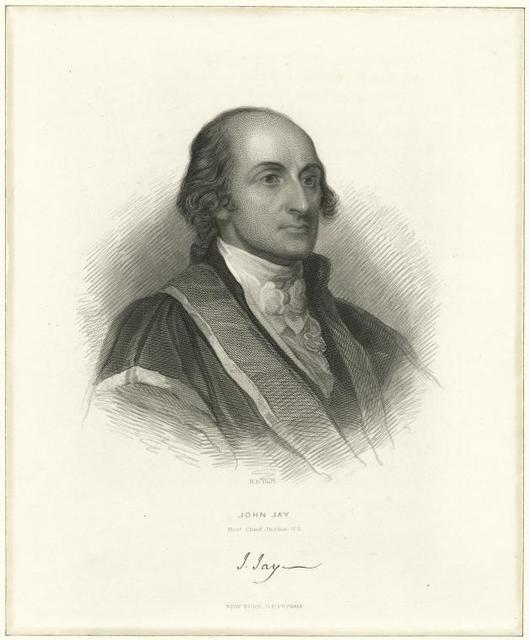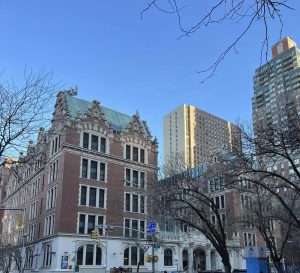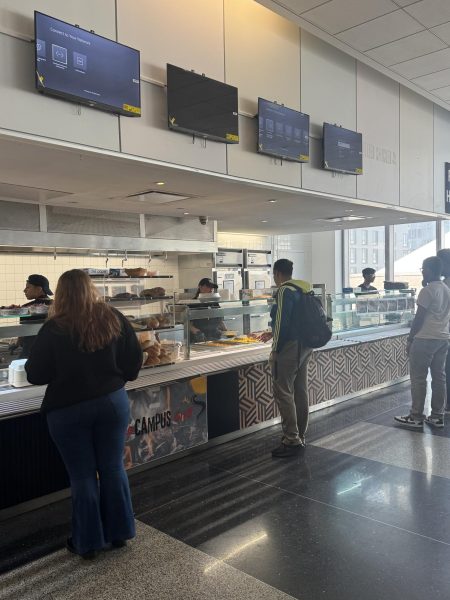Controversy Surrounding Bronze John Jay Statue in Kroll Atrium
New York Public Library Archive
Picture of John Jay
May 18, 2021
There has been a rising debate by students and administrators surrounding the John Jay Bronze statue in the school’s Kroll atrium.
The Bronze John Jay statue was unveiled in 2014 to commemorate John Jay College’s fiftieth anniversary. It is accompanied by a plaque detailing John Jay’s contributions to the United States as the first Chief Justice of the Supreme Court of the United States. The statue debuted on December 8th, 2014 and the ceremony was also attended by descendants of Jay.
Despite the school also being named after John Jay, it is said that the topic was brought up primarily due to evidence proving John Jay and his family were confirmed slave owners.
John Jay Art Crime professor, lawyer, and published author, Erin Thompson comments on the controversy in an interview for the school’s Women’s Center for Gender Justice.
In an interview conducted with Thompson, she brought attention to the issue surrounding the John Jay statue, stating that “in the last nine months and since the protests against the death of George Floyd, it has turned to the issue of whose statue we should have up.”
Thompson also wanted to highlight that she has invited Kali Holloway, writer, and director of the Make It Right Project, to come to speak at the school at an undisclosed date regarding her involvement in protesting different Confederate monuments around the country.
The Make It Right Project is a “national campaign to take down Confederate monuments and tell the truth about history.”
So, how accurate is the claim that John Jay and his family were slave owners?
Although he is prominent for being one of the Founding Fathers and is cited as one of the legislators who voted towards abolishing slavery in New York at the time, John Jay was also a slaveowner.
When asked about his possession of slaves in comparison to his political stances, John Jay defended his practice: “I purchase slaves and manumit them at proper ages and when their faithful services shall have afforded a reasonable retribution.”
Although his stance on the issue was conflicting, John Jay’s father, Peter Jay, was one of the largest slave owners in New York during the 1700s.
His grandfather, Augustus Jay, was also a slave owner, and he and Peter Jay invested in a reported 18 slave ships resulting in over 150 slaves being delivered to the colonies. This is only a bit of Jay’s extended history that is available through archives.
When discussing John Jay College’s student population, Thompson refers to the school’s student body which is forty-six percent Hispanic, twenty-one percent White, nineteen percent Black and fourteen percent Asian, according to its website.
This indicates that most students that attend are a minority and John Jay College also cites themselves as a Minority-Serving Institution.
BSU President, DeCarlos Hines, feels that the statue is a constant reminder of slavery. He believes that instead of disposing of the statute, “let’s deface the statue. Make it a statement rather than making it disappear. I’m okay with making it disappear but I think it will be more powerful to see the statue where it’s at, defaced.”
Based on the community they are aiming to serve, continuing to allow John Jay to remain the namesake of the school is borderline offensive to the student body and its administrators.
The BSU has used the attention they received from the murder of George Floyd and the racial tensions this past year as a way to bring attention to racial issues within the post-secondary curriculum.
The club collectively sent a letter to President Mason demanding changes within the school, curriculum, and a diverse representation of faculty.
Hines’ strides for change did not go unnoticed. Apart from placing pressure on administrators of John Jay College, they have also involved the news and different media outlets to spread their ideas.
President Mason responded to the BSU’s letter and since then, they have made adjustments to the curriculum that highlights the history and teachings of minorities. Hines also noted that typically when a school works towards changing a curriculum, it takes about two to three years.
However, because of all the hard work and effort that he and his team have made towards these alterations, they were able to complete the project within a year. Their proposal was also just approved about two weeks ago so their changes will take into effect in time for the 2021-2022 school year starting this Fall.
When asked about her stance on John Jay’s statue being presented in the Kroll Atrium, Junior student Nadia Feliz stated that “It does nothing to make Black and Brown students feel more comfortable within an already predominantly White circumstance.”
“Minorities already feel prone to failing in college because of the inconsistencies in privilege, income, and/or standards. We need to make students feel more accepted and like they can succeed in school despite the history. I think the statue should be removed,” she said.











